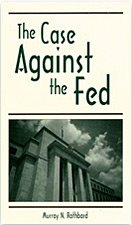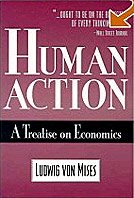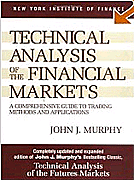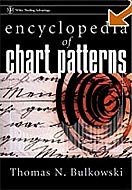F.T: Investors start fresh gold rush..
By Javier Blas
Financial Times, London
Wednesday, October 1, 2008
"Fiat money, in extremis, is accepted by nobody," Alan Greenspan, the former chairman of the US Federal Reserve, told lawmakers in Washington almost a decade ago. "Gold is always accepted," he added.
The "in extremis" scenario was for years only a possibility in the mind of die-hard gold bugs, but the financial crisis is leading regular investors -- from the ultra-rich to middle-class savers -- to believe that the environment in which Mr Greenspan said fiat money would be worthless is now around the corner.
The investors' response is a rush into physical gold not seen since the second oil crisis in 1979, bankers say. The shift into gold coins and bars is so extreme that it is causing shortages at refineries and mints around the world.
"This is absolutely unprecedented," says Mark O'Byrne of Gold Investment, a company that sells bullion to retail investors in Dublin and London.
Bankers at the London Bullion Market Association's annual meeting in Kyoto say their clients are not investing in gold just because of its perceived safe-haven status but also because they were able to take physical possession of it.
Veterans of the precious metals industry, such as Jeremy Charles, the chairman of the LBMA who is also head of precious metals at HSBC, say they have not seen a market like this in their 30-year-plus careers.
Gold prices surged this week to a two-month high above $925 an ounce, up more than 20 per cent since the collapse of Lehman Brothers. But betting that the investors' rush into physical assets will spur further gains could fail. Current prices are already depressing the key demand for jewellery, and that alone will cap prices.
The gold industry only forecasts a modest rise in prices, with bullion at about $958.6 a troy ounce by November next year, according to the annual LBMA poll.
On top of that, even if the retail investors' rush into gold coins is dramatic and unprecedented, its impact in gold tonnage terms is relatively small, preventing big price gains. But bankers say the price outlook is not the first consideration among those investors more concerned about "wealth preservation."
These new "gold bugs" were pushing the physical market for coins and small bars to its limits, with manufacturers unable to meet demand, LBMA delegates say.
Jonathan Potts, managing director at FideliTrade, one of the main US gold dealers in coins and investment bullion bars, says its firm has not been able to cope with the extra demand for physical gold in the past few weeks. "There is a lot of scepticism, or even distrust, about the financial system and people are running into gold," Mr Potts says. "The US Mint is doubling its gold coins production but there is demand for triple," he added.
Mr O'Byrne adds that key wholesalers have run out of stocks or are imposing quotas for the most popular one-ounce coins, such as South African Krugerrands, American Eagles and Buffaloes, Canadian Maples, Austrian Philharmonics, Chinese Pandas. and Australian Nuggets.
"They cannot supply one or 10-ounce gold bars either," he said.
* * *
Financial Times, London
Wednesday, October 1, 2008
"Fiat money, in extremis, is accepted by nobody," Alan Greenspan, the former chairman of the US Federal Reserve, told lawmakers in Washington almost a decade ago. "Gold is always accepted," he added.
The "in extremis" scenario was for years only a possibility in the mind of die-hard gold bugs, but the financial crisis is leading regular investors -- from the ultra-rich to middle-class savers -- to believe that the environment in which Mr Greenspan said fiat money would be worthless is now around the corner.
The investors' response is a rush into physical gold not seen since the second oil crisis in 1979, bankers say. The shift into gold coins and bars is so extreme that it is causing shortages at refineries and mints around the world.
"This is absolutely unprecedented," says Mark O'Byrne of Gold Investment, a company that sells bullion to retail investors in Dublin and London.
Bankers at the London Bullion Market Association's annual meeting in Kyoto say their clients are not investing in gold just because of its perceived safe-haven status but also because they were able to take physical possession of it.
Veterans of the precious metals industry, such as Jeremy Charles, the chairman of the LBMA who is also head of precious metals at HSBC, say they have not seen a market like this in their 30-year-plus careers.
Gold prices surged this week to a two-month high above $925 an ounce, up more than 20 per cent since the collapse of Lehman Brothers. But betting that the investors' rush into physical assets will spur further gains could fail. Current prices are already depressing the key demand for jewellery, and that alone will cap prices.
The gold industry only forecasts a modest rise in prices, with bullion at about $958.6 a troy ounce by November next year, according to the annual LBMA poll.
On top of that, even if the retail investors' rush into gold coins is dramatic and unprecedented, its impact in gold tonnage terms is relatively small, preventing big price gains. But bankers say the price outlook is not the first consideration among those investors more concerned about "wealth preservation."
These new "gold bugs" were pushing the physical market for coins and small bars to its limits, with manufacturers unable to meet demand, LBMA delegates say.
Jonathan Potts, managing director at FideliTrade, one of the main US gold dealers in coins and investment bullion bars, says its firm has not been able to cope with the extra demand for physical gold in the past few weeks. "There is a lot of scepticism, or even distrust, about the financial system and people are running into gold," Mr Potts says. "The US Mint is doubling its gold coins production but there is demand for triple," he added.
Mr O'Byrne adds that key wholesalers have run out of stocks or are imposing quotas for the most popular one-ounce coins, such as South African Krugerrands, American Eagles and Buffaloes, Canadian Maples, Austrian Philharmonics, Chinese Pandas. and Australian Nuggets.
"They cannot supply one or 10-ounce gold bars either," he said.
* * *
Labels: fiat money, gold















![[Most Recent Quotes from www.kitco.com] [Most Recent Quotes from www.kitco.com]](http://www.kitco.com/images/live/t24_au_en_usoz_6.gif)
![[Most Recent Quotes from www.kitco.com] [Most Recent Quotes from www.kitco.com]](http://www.kitco.com/images/live/au_go_0030_ny.gif)
![[Most Recent Quotes from www.kitco.com] [Most Recent Quotes from www.kitco.com]](http://www.kitco.com/images/live/au_go_0365_ny.gif)
![[Most Recent Quotes from www.kitco.com] [Most Recent Quotes from www.kitco.com]](http://kitconet.com/charts/metals/silver/t24_ag_en_usoz_4.gif)

















0 ΣΧΟΛΙΑ (COMMENTS):
Post a Comment
<< Home